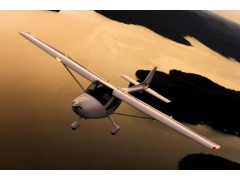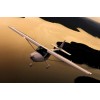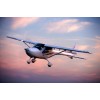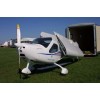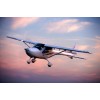Our Training goals are:
Provide the best, most efficient training and learning environment for you.
Keep our 100% accident/incident free safety record intact and train you to be a safe and exceptional pilot.
Cater to your individual needs and customize your training program to achieve your goals.
Make it a very rewarding and enjoyable learning experience.
When you have your Sport Pilot License, you’ll be able to fly a sport category airplane, normally a two seater with friends and family for recreation or on trips around the country, even internationally. Typically you’ll fly a rented/owned sport airplane that flies at speeds in the 110 to 130 mph.You’ll have access to thousands of airports around the country and will be able to take trips in a weekend that would require days of traveling by car. Perhaps most important, though, you’ll have the freedom of the skies, able to take off and enjoy the breathtaking scenery and freedom of the skies whenever you choose. You’ll also have set yourself apart from the majority of the population, mastered a great challenge, experienced probably the greatest adventure of all, and have become one of the few who master the skies. Obtaining a sport pilot license can be significantly easier and cheaper than a private pilot license. The FAA training requirements for the license is much lesser than private pilot license. This license is also very popular for pilots who are training for recreational reasons. The sport pilot license does not require an FAA medical examination.
What is a Light Sport Aircraft
The FAA defines a Light Sport Aircraft as an aircraft, other than a helicopter or powered-lift that, since its original certification, has continued to meet the following:
Maximum gross takeoff weight—1,320 lbs, or 1,430 lbs for seaplanes.
Lighter-than-air maximum gross weight—660 lbs (300 kg.)
Maximum stall speed—51 mph (45 knots)
Maximum speed in level flight with maximum continuous power (Vh)—138 mph (120 knots)
Single or two-seat aircraft only
Single, reciprocating engine (if powered), including rotary or diesel engines
Fixed or ground-adjustable propeller
Unpressurized cabin
Fixed landing gear, except for an aircraft intended for operation on water or a glider
Can be manufactured and sold ready-to-fly under a new Special Light-Sport aircraft certification category. Aircraft must meet industry consensus standards. Aircraft under this certification may be used for sport and recreation, flight training, and aircraft rental.
Can be licensed Experimental Light-Sport Aircraft (E-LSA) if kit- or plans-built. Aircraft under this certification may be used only for sport and recreation and flight instruction for the owner of the aircraft.
Will have FAA registration (N-number).
Aircraft category and class includes: Airplane (Land/Sea), Gyroplane, Airship, Balloon, Weight-Shift-Control (“Trike” Land/Sea), and Powered Parachute.
U.S. or foreign manufacture of light-sport aircraft is authorized.
Aircraft with a standard airworthiness certificate that meet above specifications may be flown by sport pilots. However, the aircraft must remain in standard category and cannot be changed to light-sport aircraft category. Holders of a sport pilot certificate may fly an aircraft with a standard airworthiness certificate if it meets the definition of a light-sport aircraft.
May be operated at night if the aircraft is equipped per FAR 91.205, if such operations are allowed by the aircraft’s operating limitations and the pilot holds at least a Private Pilot certificate and a minimum of a third-class medical.

